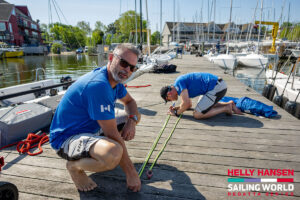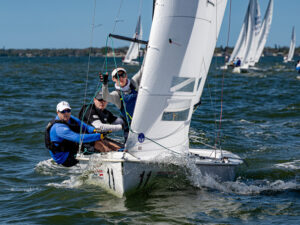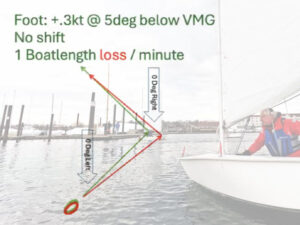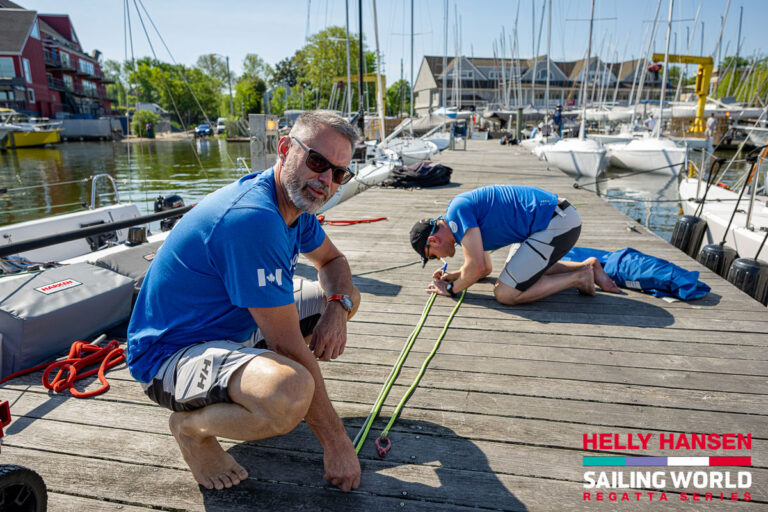For many, sailing conjures up images of a relaxed sunny afternoon sipping a cocktail while bobbing about on a comfy boat. Racers know a much different picture. High-performance sailing takes place in one of the most physically demanding and challenging environments of any sport. The weather can be punishing, and the challenge is often compounded by fatigue, dehydration, and caloric deprivation on top of muscle exhaustion. Injuries are going to happen, but many are avoidable.
The rougher the seas and the lighter the boat, the more unstable the platform on which a sailor must work. The human body responds to this with a complex set of coordinated responses between the vestibular labyrinth of the inner ear and the core trunk muscles. Proper balance on the boat requires both flexibility and a strong muscle core.
Flexibility does not come easy with age. Too many times I have heard, “Now that I can afford the boat, I’m too stiff to sail it.”
A 10-minute stretching program performed three to four times a week and focused on the lower back—both forward and into the extension—upper back, legs, hamstrings, shoulders, and upper arms will maintain flexibility of joints and go a long way toward avoiding injury. Pre- and post-race stretching is a necessity. Loosening up in the morning, which can be done on the dock or the boat, by following a set program hitting all the major muscle groups, will help you avoid injury.
Pre-Race Stretches
Your pre-race stretching routine should be a mini vacation for your body, not punishment. A good stretching program should flow and there never should there be pain. It’s not exercise or competition.
Start with a brisk walk to get blood in the muscles before stretching. Stretching cold muscles is like stretching a frozen rubber band. Start with the largest muscles first and work toward the smaller. Stretch to your limits and never let anyone push you past your point of comfort. Here’s a good general pre-race stretching program that you can do on the dock, or even on a medium-sized keelboat on the motor out to the course.
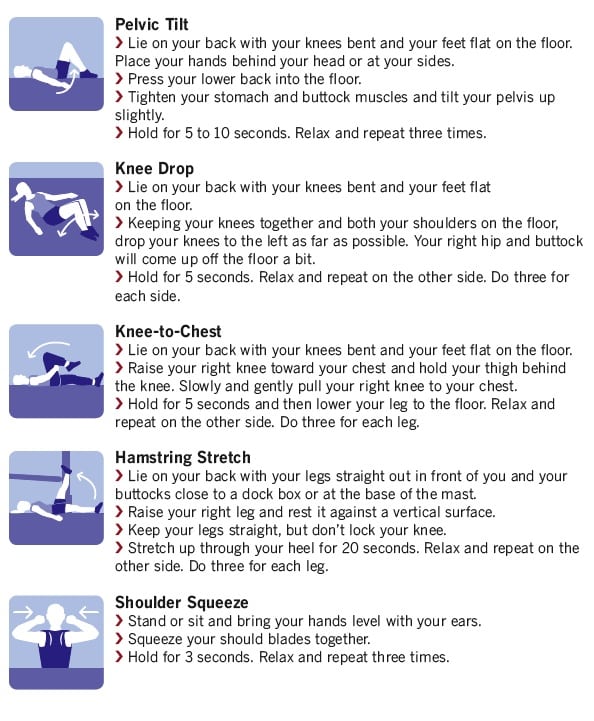
Post-Race Stretches
A post-race stretch, especially when done before any heavy lifting, such as moving sails, is as important as pre-race stretching. Racers should do the following stretches in order to loosen any muscle tension. Repeat each stretch seven to 10 times.
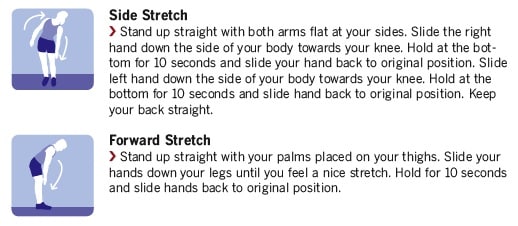
Liquid Strength
Fatigue and dehydration dramatically increase the likelihood of injury. Hydrate frequently rather than waiting until extreme thirst sets in. Use a mix of electrolytes and water or alternate their use to keep the proper balance of salt and water. A general rule on hydration is to drink at least one ounce of liquid for every 2 pounds of body weight. With vigorous activity, increase that number by at least 30 percent. You cannot win without proper fluid consumption.
Treating Injuries
A pre-regatta dose of ibuprofen or Naprosyn can result in improved flexibility and reduced joint pain. Be sure to follow up with a post-regatta dose after fully hydrating.
Ice and heat are used to treat joint stiffness and pain, but work differently. Ice is used to decrease the temperature of the skin and joint and reduce pain. In addition, in the face of acute injury— such as a severe bruise—ice decreases blood flow to the affected area and, therefore, reduces swelling. This works well in the first 10 to 12 hours after injury, but should not be continued past 24 hours after the injury.
Heat increases blood flow to an area and absorbs edema (fluid), which may have already formed. In addition, heat relieves muscular spasm from flare-ups from a back, neck, or shoulder injury. Heat should be used in connection with light stretching and range-of-motion stretching of a joint to maintain proper flexibility.

